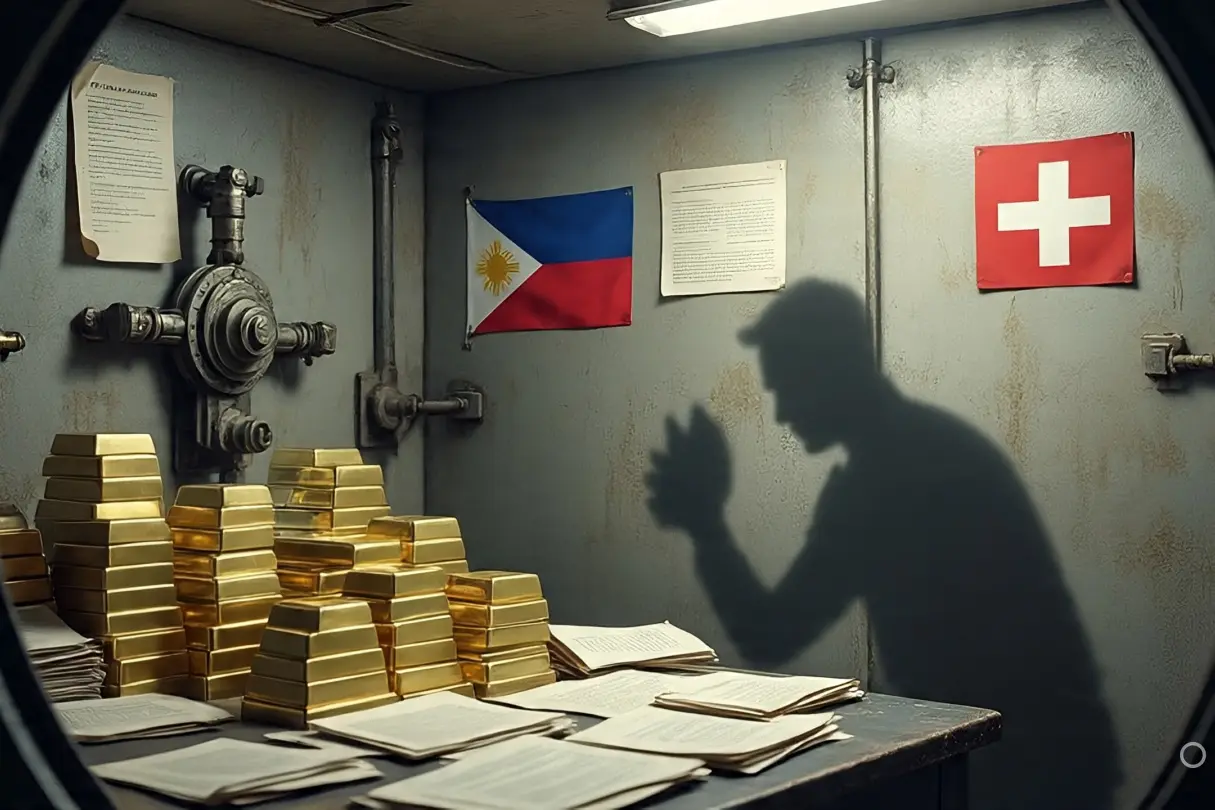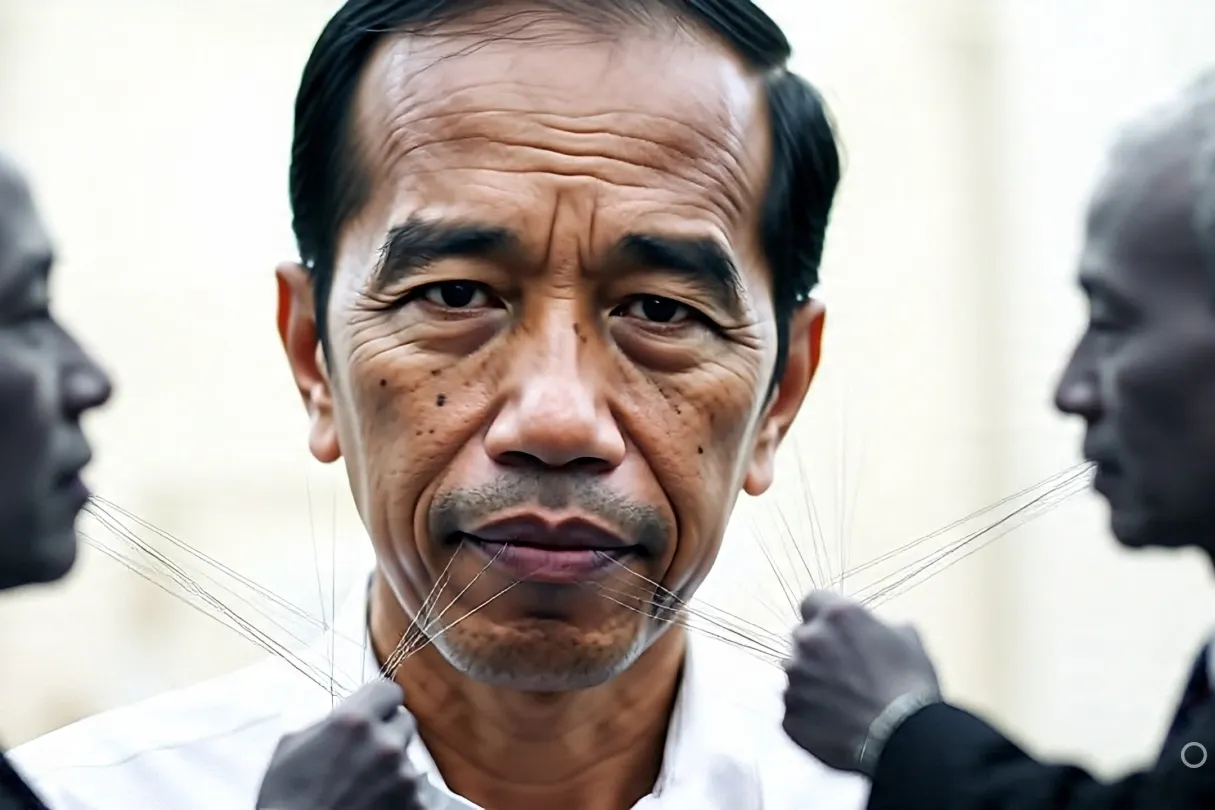🪙 The Golden Story That Won’t Die
For decades, stories have circulated that Ferdinand Marcos, the late Philippine dictator, discovered an enormous hoard of gold—either from Yamashita’s treasure, looted WWII war gold, or mysterious royal sources—and secretly deposited it abroad “for the benefit of the Filipino people.”
Supporters claim that these deposits total trillions of dollars, hidden in Swiss banks, Citibank, or other financial institutions under coded names such as “Jose Velarde” or “William Saunders.” Some go as far as to say that this wealth is the foundation for a future “golden age” once it is released.
It’s a story that appeals to national pride, promises prosperity, and paints Marcos not as a plunderer, but as a misunderstood patriot.
But how much of this is true?
Let’s break down where this myth came from, why it spread, and what the actual legal and historical records say.
🧟♂️ Origin of the Myth: From War Loot to Martial Law
The Yamashita treasure legend began after World War II. Japanese General Tomoyuki Yamashita supposedly stashed a vast trove of plundered war gold across the Philippines before surrendering in 1945. Despite decades of digging, no credible proof has ever verified this treasure exists.
The Marcos twist likely began in the 1970s and 1980s, during the height of his dictatorship. Rumors spread that Marcos had discovered a portion of Yamashita’s loot or was entrusted with secret gold by wealthy global elites—variations included:
-
A Filipino royal family entrusting him with ancient gold
-
Secret Vatican or Illuminati connections
-
Marcos is using gold as “collateral” to secure global peace
🧠 These narratives gained steam during and after the Marcos regime, especially among loyalists who couldn’t reconcile the mounting evidence of corruption with their admiration for the man.
📲 How It Went Viral: From Chain Letters to TikTok
In the early 2000s, Marcos’ gold stories were primarily shared via email chains and YouTube documentaries. However, the rise of Facebook, YouTube Shorts, and TikTok in the 2010s breathed new life into the myth.
Videos claiming “hidden wealth” was about to be released regularly rack up millions of views, often mixing historical footage, solemn music, and cryptic bank screenshots. These posts:
-
Use vague documents and unverified “bank receipts.”
-
Rely on emotional appeals to “Filipino destiny”
-
Avoid legal references or citations from credible institutions
🎥 Influencers and vloggers push these stories not just for clout, but often as part of a larger pro-Marcos narrative aimed at restoring the family’s image.
🏛️ What the Legal Records Actually Show
Let’s move from myth to fact.
After Marcos was ousted in 1986, the Philippine government formed the Presidential Commission on Good Government (PCGG) to recover ill-gotten wealth. Here’s what they found:
💼 Swiss Bank Accounts
In 1998, the Swiss Federal Court ruled that $683 million stashed in Marcos-linked accounts in Switzerland were indeed ill-gotten and must be returned to the Philippine government. These accounts were under aliases like “William Saunders” (Marcos) and “Jane Ryan” (Imelda).
🧾 No Legal Gold Accounts Found
The PCGG, along with international investigators, never found any credible gold accounts or evidence that Marcos was in possession of trillions. What they did find were:
-
Over $10 billion in stolen funds, traced through offshore accounts, real estate, and artworks
-
Shell companies and complex financial layering used to hide wealth
-
No signs of wealth “held in trust” for the Filipino people—just personal enrichment
🧑⚖️ Court Rulings
Several Supreme Court rulings, both in the Philippines and abroad, concluded that Marcos acquired wealth far beyond legal means. In every case, the money was judged as:
-
Illegally acquired
-
Not backed by any legitimate source like “gold reserves”
-
Not earmarked for national benefit
If such “trillions” in gold really existed, why hasn’t any credible global financial institution confirmed it in 40+ years?
🧠 Why People Still Believe It
Belief in the Marcos gold myth isn’t driven by facts—it’s about hope, trauma, and identity.
1. 🇵🇭 Postcolonial Aspiration
The idea that the Philippines secretly holds enough wealth to rival world powers taps into national pride and postcolonial frustration. It imagines a world where Filipinos aren’t exploited—but in control.
2. 🧓 Generational Echoes
Older Filipinos who benefited from infrastructure projects under Marcos are more likely to believe the “golden age” narrative. They pass it on to younger relatives, often without questioning its origin.
3. 📱 Algorithmic Manipulation
Social media platforms favor engagement over accuracy. Even if a video is flagged or debunked, the damage is done. The myth gets repeated, reshared, and cemented in public memory.
4. 😶🌫️ Political Rebranding
The myth is part of revisionist efforts to clean the Marcos name. By recasting the dictator as a misunderstood genius with secret wealth, his family’s political return seems not only just—but heroic.
🔍 Myth as a Tool of Modern Revisionism
The Marcos gold myth isn’t just a harmless urban legend—it’s a propaganda tool. It rewrites history, obscures truth, and creates a false sense of national destiny tied to one family.
By promoting the idea that Marcos “meant well” and “left a legacy” in the form of invisible gold, the myth works to erase the theft, torture, and systemic corruption that characterized his rule.
🎯 The danger isn’t just believing in fairy tales—it’s building the future on lies.
History must be grounded in records, court rulings, and verified truths—not convenient fantasies. If the goal is true national dignity, it begins with facing our past—not gilding it.




